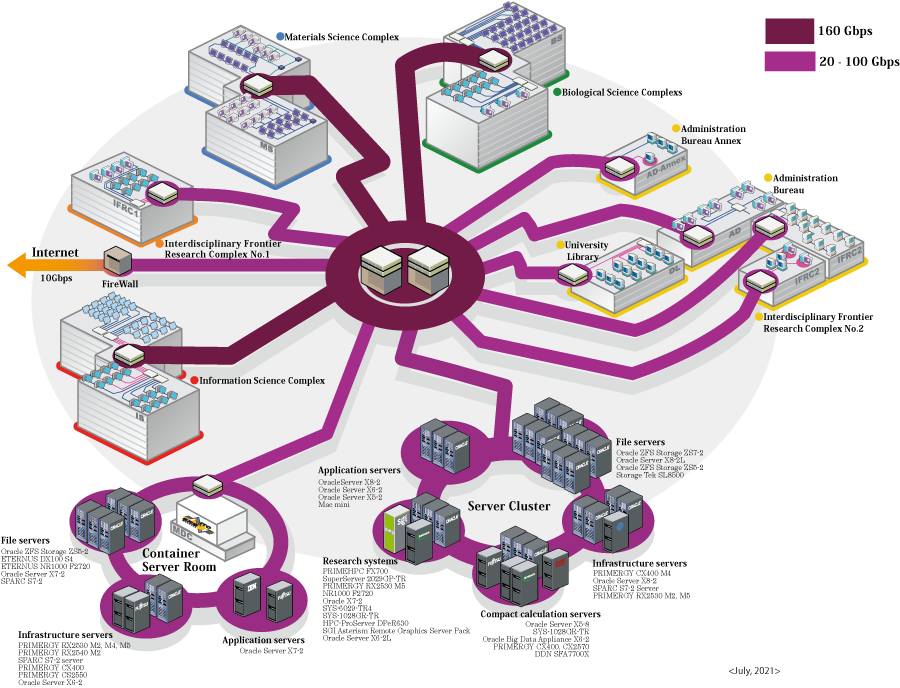The Mandara System at NAIST is built upon a centrally managed and administered university-wide computer network, to support educational and research activities for post-graduate level.
Mandara refers to the spiritual mentality in Esoteric Buddhism that searching for the infinitesimal paradoxically leads to infinite proliferation.
The system at NAIST is formed by strategic architectural configuration to build an advanced environment and to meet user needs based on system development. In developing this system specifically to fulfill the needs of researchers, we aim to achieve the fundamental principle, that Mandara represents, without excess or deficiency.
To the world's fastest class
To support cutting-edge research, a largevolume of data needs to be calculated, processed, and transferred instantly.
The Mandara System consists of large storage devices with a total capacity of as much as 9.1 petabytes (peta: 1015, or one thousand trillion), gigaflops-class calculation servers, a digital library system which gathers information necessary for education and research and distributes multimedia information, and a ultra-high-speed network with a core transmission speed of 100 Gbps.
A workstation / PC is available for every single NAIST user to ensure optimal use of the Mandara System.
Mandara Network
The Mandara Network is the backbone of the Mandara System. Comprising an extensive range of equipment, operation of the Mandara System is dependent on smooth intra-system communications.
The system also needs to support seamless resource sharing, high-definition multimedia communication, and grid computing.
Since NAIST was founded, the Mandara Network has been constantly improved to create one of the fastest ultra-high-speed campus networks in the world.
At present, the communication speed is 160 Gbps for the core and 20 Gbps or higher for the branch networks. Wireless LAN services of 50-450 Mbps are also available on the entire campus.
The Mandara Network is connected to the Internet via an exclusive high-speed line of 10 Gbps to enable ultra-high-speed access to main external sites in and outside Japan.
More than 4,000 terminals are connected to the network.

(BigSize:PNG, PDF)